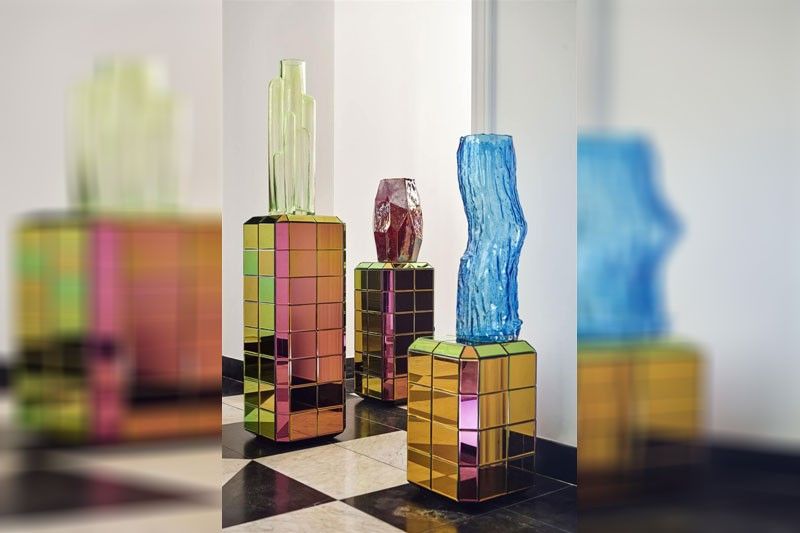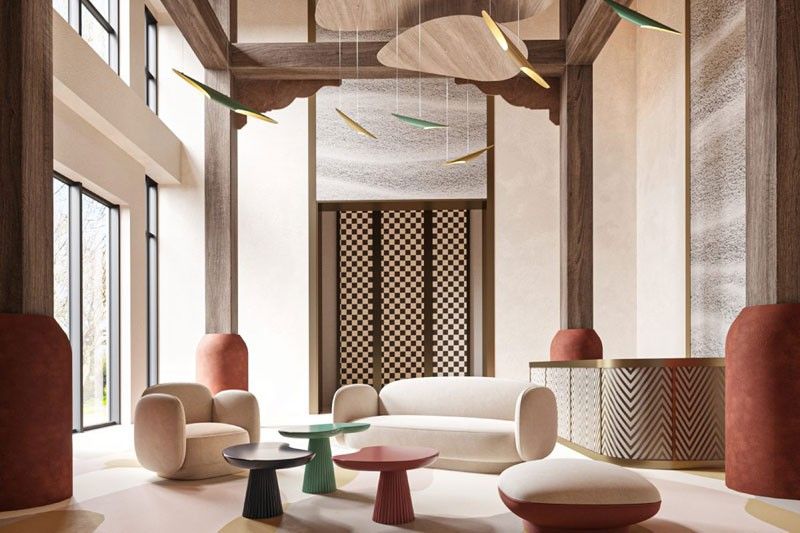Meta sensible interiors for the maison

The past two years have brought many contradictory feelings but have also taught us many valuable lessons. As we became more introspective, we appreciated slower design, better craftsmanship, artisanal work and the tactility of objects that surround us in the home. The work of the hand and the closeness to nature and the earth grounded and anchored us to the real world. At the same time, as we explored cyberspace, we escaped from the constraints of the physical and entered an idealized digital environment.
For the recently concluded Maison & Objet show in Paris, these two opposing worlds seemed like they need not remain separate through the theme of “Meta Sensible,” a concept forged by NellyRodi, the trend-forecasting agency. Vincent Grégoire, director of Consumer Trends and Insights, observes that “In 2020, we were all in resistance mode; in 2021, in resilience mode. 2022 marks a desire for rebirth.”

With COVID, we had a fear of losing our senses — taste, smell, and our connectedness to the outside world — by virtue of isolation during lockdown, which limited the space that we could see and experience. As a reaction, we now want to absorb everything more intensely, almost in hypersensitive mode the way one would in virtual reality. Even boomers have begun to negotiate the digital alongside their cyber-native grandchildren.
Grégoire points out the generational divide: On one side are the “quincados” (combination of “quinqua” or people in their 50s with “adolescents”), a term used by sociologist Serge Guérin for seniors who decided to change their attitude and just enjoy life without heeding what society imposes on them — no longer wanting to live in the daily grind and confine themselves to activities of “their age.” Feeling alive and in full possession of their means, it’s a desire to participate in the world and continue to live new experiences that drive them.
With increased life expectancy, turning 50 is seen as the beginning of life when you can start all over again — far from the beginning of the end. Guérin explains that, “Unlike midlife crisis, when one turns into an ‘adultescent’ who does not want to become an adult and refuses responsibility, the quincado knows full well what he is, with the constraints that this entails, but he does not want to remain who he was asked to be. He’s not someone who wants to go back to childhood, he’s someone who wants to give himself the right to have dreams.”

On the other side are those of the younger generation who have not known life without the internet, managing a daily life through social networks. “The quincados who refuse a possible downgrading by age, rub shoulders with this generation. Digital is becoming a medium like any other, it naturally accompanies the physical experience and augments it more than replaces it,” according to Grégoire.
With the clash of experiences between the two worlds, the borders between the real and the virtual become porous. “The physical world is no longer in opposition with its digital counterpart. Better still, the two cross-fertilize, mutually enhancing each other.” Ateliers have drawn inspiration from the fantasy worlds that started springing up as lockdown ended and the metaverse began gaining traction. Meta-sensible interiors flaunt soft hues and almost surreal, curvaceous silhouettes, inspiring designers and design houses alike. “The home becomes like a comfortable cocoon, where bubble-gum-style furnishings are dressed in a cloak of iridescent hues.”
Mojow, a new furniture and decoration brand that sees itself as “audacious,” fits this forward, meta-sensible style, combining metal or wood frames with colored inflatable elements in transparent or opaque versions, “timeless shapes with a fun, tangy, pop and crazy spirit.” Sofas have a sculptural aesthetic, a new sensuality emerging from its soft and full forms. “Its daring features imbued with softness invite you to let go and encourage daydreaming.”
Pols Potten plays the adolescent card with creations that “take interiors to unexpected places, bringing them to life and making them play.” Exploring with enthusiasm, designing with humor and creating with the curiosity of a lifelong learner, the design house respects and nurtures their greatest asset — their creative instinct. Iridescent mirrored squares of their Pixel Pillar stands bring you straight to the metaverse, paired with textured hand-blown glass “trunk” vases that ground you to earth with its artisanal qualities and references to nature.
At Maison Dada, the Major Tom seating collection, designed by Thomas Dariel, takes its name from the fictional character in David Bowie’s song Space Oddity, where an astronaut slips from the bounds of the earth to journey beyond the stars. In the song’s video, Bowie wears a space-inspired outfit by Pierre Cardin. The lunar shapes and curved silhouettes of the sofas are actually a perfect fit for the couturier’s house near Cannes, the Palais Bulles, which Dariel calls “a joyous bubbling landmark of architecture for alternate life.” He is inspired by both Bowie and Cardin, two trailblazing artists who shared a fascination with the moon — two disruptors in their own fields and whose creations are still contemporary by being immune to trends. “50 years after the moon landing, we are still looking at the stars,” Dariel observes.
* * *
Follow the authors on Instagram @rickytchitov; Twitter @RickyToledo23; Facebook - Ricky Toledo Chito Vijandre.



















